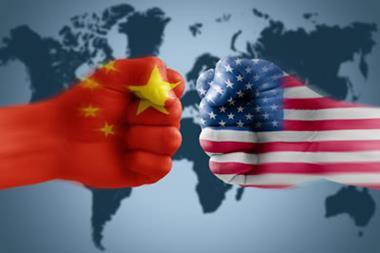Comment: As the US prolongs uncertainty by further delaying a decision on trade tariffs for the EU, Frank Masteling, head of trade credit specialist insurer Equinox Global Netherlands, part of Nexus Group, focuses on what buyers of insurance should consider amid the current zeitgeist of escalating global supply chain risk

Was it a collective sigh of relief or frustration I sensed when, on 1st May, US President Donald Trump extended negotiations with the EU - among others - on his administration’s threatened steel and aluminium tariffs?
Relief, perhaps, because the US import rates of 25% on steel and 10% on aluminium had been once again granted a reprieve - albeit temporary. But frustration too at the very fact that these negotiations are taking place in the first place, and the threat of a global trade war continues to loom on the horizon. Indeed, new tariffs have already been in place for others, such as China and Japan, since 23rd March this year.
Trump’s delaying of a decision for future EU import tariffs will only prolong uncertainty for businesses in the region, while buying time for the US to put forward the idea of trading quotas instead of tariffs - a concession to which South Korea has already agreed.
This would not be the full exemption that the EU is seeking, and the rhetoric is heating up, with the European Commission stating in response to the 1st May extension, “As a longstanding partner and friend of the US, we will not negotiate under threat.”
Concern about the impact of tariffs and quotas on world trade is justified. Initially, the tariffs were widely interpreted to be aimed at what the US views as unfair trade practices from China, but the potential international fallout of further escalation truly has global ramifications.
Collateral damage to the EU
Indeed, at the end of April, French economy minister Bruno Le Maire highlighted the risk of Europe becoming ‘collateral damage’ in the current zeitgeist of trade tension between the US and China.
The increasing globalisation of supply chains leaves businesses exposed when nations adopt protectionist economic measures. Indeed, supply chains by their very nature are among the first to be hit when new tariffs are imposed thanks to uncertain long-term pricing and the risk of sudden price spikes. This in turn can cause companies to lose income due to non-payment, then default on their own contracts, and even collapse.
Bad debt risk cannot be eliminated from any business, and the more complex the supply chain, the more complex the risk. To avoid the knock-on effect from companies going bankrupt in the supply chain, trade credit insurance can help to protect against the risk that a buyer goes insolvent leaving bad debt in its wake. Indeed, trade credit insurance can be a crucial source of liquidity to supply-chain heavy sectors, such as oil and gas, machine building or construction, for instance.
Supply chain risk management
Now, perhaps more than ever in the last decade, companies that are active in business-to-business sectors need to make a careful assessment of the risks they face. These risks should be taken into account from the outset when deciding whether to offer credit to contractors / third parties buying your products, and indeed the terms and level of credit your business should offer to any organisation.
Supply chain risk management is clearly a board level topic for any company that could be impacted by supply chain disruptions, as are risk management principles themselves. Good examples of risk management include comprehensive vetting of buyers, processes for securing full visibility and monitoring the supply chain, and having options in place for diversification and flexibility of the supply chain should one link in the chain come under pressure.
It is possible to manage credit risk internally, and some smaller and bigger businesses are doing this. However, it clearly requires discipline and available cash flow to make provisions for potential bad debts. Buying credit insurance can assist the credit management by assessing the bigger credit risks, releasing provisions, getting better terms for your financing and indemnify you if a buyer doesn’t pay.
Next to the big international credit insurers, more local and regional trade credit insurers offer specific products for local markets, so it is worth exploring all options. One of the key developments in the credit insurance market is the recent availability of non-cancellable credit limits for portfolios of buyers. This will protect your buyer portfolio not only for sudden bankruptcies but also against limit cancellations by the insurance company. If you combine your credit insurance policy with non-cancellable credit limits, your supply chain is even more protected against (sudden) shocks.
The current trade tensions could well herald the dawn of a beneficial new multilateral system as far as trade is concerned, but that may also be wishful thinking. In the meantime, uncertainty pervades.
One thing is clear: while there are world trade fundamentals that need to be addressed, and not limited to overcapacity in the world steel market, escalation of trade barriers between countries will not benefit the global economy in either the short or the long term. In the meantime it is better to have good protection in place.




















No comments yet